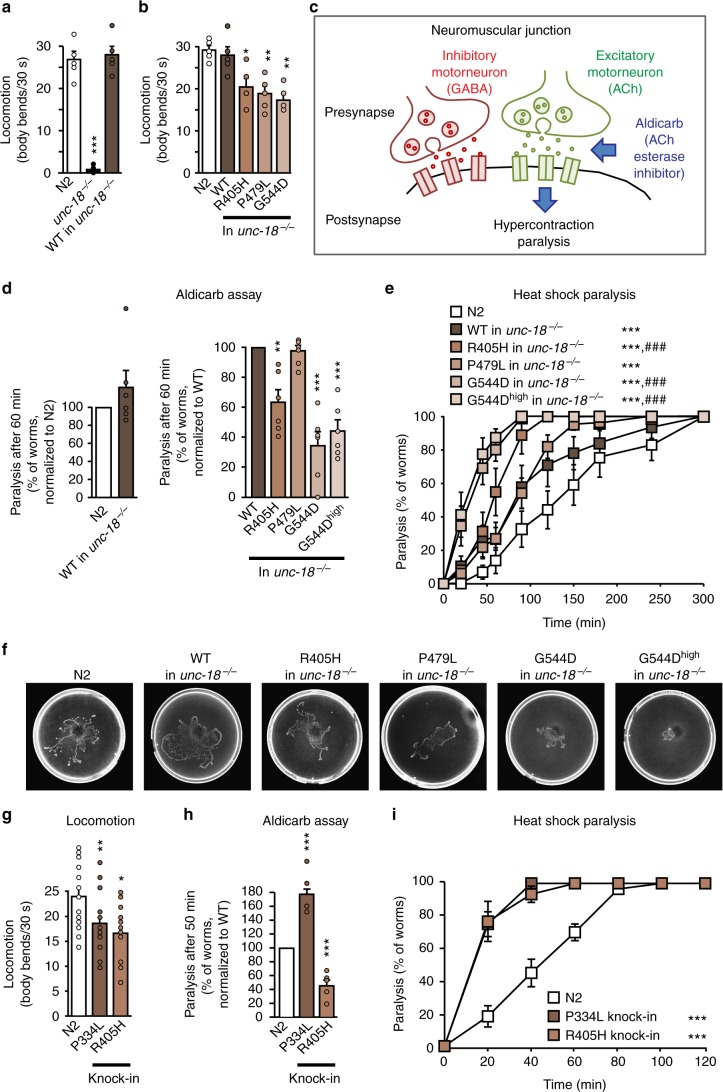Fig. 1.
Neuronal impairments in C. elegans expressing mutant UNC-18. a, b Locomotion of C. elegans. Body bends of indicated worm strains per 30 s were counted. Data are means ± SEM (*p < 0.05, **p < 0.01, ***p < 0.001 by Student’s t test; n = 5 independent experiments on ten worms per experiment). c Scheme of the aldicarb assay. d Mutants display reduced acetylcholine release at the worm neuromuscular junction. Paralysis of young adult worms expressing WT or mutant unc-18 was measured 60 min after exposure to aldicarb (see Supplementary Fig. 2d for entire curves). Data are means ± SEM (**p < 0.01, ***p < 0.001 by Student’s t test; n = 6 independent experiments on 20 worms per experiment). e Heat-induced paralysis. Indicated worm strains were exposed to 37 °C over a period of 300 min, and paralysis was scored at indicated time points. Data are means ± SEM (***p < 0.001 by two-way ANOVA, compared to N2; ###p < 0.001 by two-way ANOVA, compared to unc-18-WT in unc-18−/−, n = 9–13 independent experiments on ten worms per experiment). f Worm traces after heat-induced paralysis. Plates were imaged after heat shock analysis in e. g–i Locomotion, acetylcholine release, and heat shock paralysis of CRISPR-edited C. elegans. Worms were assayed as in a–e. Data are means ± SEM (*p < 0.05, **p < 0.01, ***p < 0.001 by Student’s t test in g and h and two-way ANOVA in i; n = 15–20 worms for g, n = 5–6 independent experiments on 20–25 worms per experiment for h, and n = 6 independent experiments on ten worms per experiment for i)

